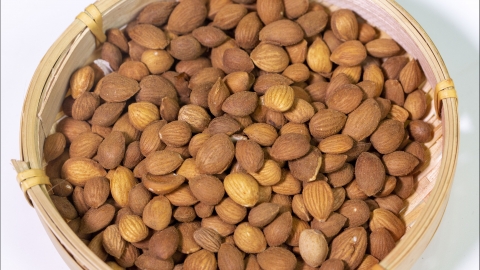What are the traditional Chinese medicines that break up blood stasis and eliminate blood stagnation?
Commonly used blood-activating and stasis-resolving traditional Chinese herbs include Semen Persicae (peach kernel), Flos Carthami (safflower), Chuanxiong Rhizoma (Ligusticum wallichii), Rhizoma Curcumae (zedoary), and Rhizoma Sparganii (Sparganium stoloniferum). Detailed analysis is as follows:

1. Semen Persicae (Peach Kernel): This herb promotes blood circulation and removes blood stasis, while also moistening the intestines and facilitating bowel movements. It is particularly effective in resolving accumulated blood stasis and is commonly used to treat dysmenorrhea, amenorrhea, and swelling or pain due to trauma caused by blood stasis. With a mild nature, it not only breaks up blood stasis but also helps relieve constipation associated with stasis.
2. Flos Carthami (Safflower): Known for its ability to invigorate blood circulation, regulate menstruation, disperse blood stasis, and alleviate pain, safflower has a strong effect in breaking up blood stasis. It is especially suitable for menstrual irregularities, postpartum abdominal pain due to retained stasis, and joint pain caused by blood stasis. It is often combined with other blood-activating herbs to enhance its stasis-dispersing effects.
3. Chuanxiong Rhizoma (Ligusticum wallichii): This herb activates blood, regulates qi, dispels wind, and relieves pain. It not only resolves blood stasis but also regulates the flow of qi, making it ideal for treating headaches, chest and rib distension, and dysmenorrhea caused by blood stasis accompanied by qi stagnation. Its pungent and dispersing nature allows it to ascend to the head and eyes and descend into the "sea of blood," making it widely applicable in various conditions involving blood stasis.
4. Rhizoma Curcumae (Zedoary): Possessing the functions of regulating qi, breaking up blood stasis, eliminating accumulations, and relieving pain, zedoary has a strong effect on resolving blood stasis and dispersing stagnation. It is commonly used for abdominal masses (such as intra-abdominal tumors), amenorrhea, and abdominal pain due to food retention caused by blood stasis. It is particularly suitable for cases where blood stasis coexists with accumulation.
5. Rhizoma Sparganii (Sparganium stoloniferum): This herb excels at breaking up blood stasis, regulating qi, eliminating accumulations, and relieving pain. Its action in resolving blood stasis is similar to that of zedoary. In addition to dispersing blood stasis and accumulations, it also improves abdominal distension and pain caused by indigestion. It is often used together with zedoary to enhance the effects of blood activation and elimination of accumulations.
Blood-activating and stasis-resolving herbs often have distinct properties, and some are quite potent. They must be used under the guidance of a qualified TCM practitioner and should not be self-collected or taken without supervision. If any adverse reactions occur during use, discontinue the medication immediately and consult a physician.




